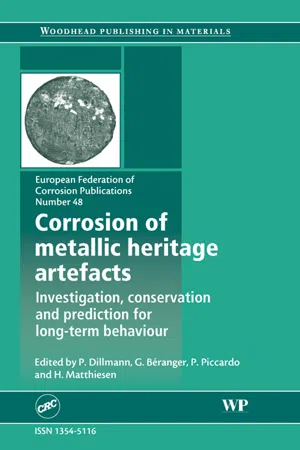1.2 How scientific examination and archaeometric studies receive most of the funding
The need to better document artefacts that are witnesses of the development of past civilisations is universally accepted. Art historians are playing a key role here since they constantly need scientific data to support their theoretical approach. The literature in the field is quite abundant and some prominent research and cultural institutions even publish their own journals dedicated specifically to these topics (Techné2 for the Centre for Research and Conservation of French Museums – UMR 171, Paris (France), and Technologische Studien3 for the Kunsthistorisches Museum, Vienna (Austria)). Other journals such as ArtMatters4 in the Netherlands cover topics of national interest. These new journals clearly show the need to disseminate the outcomes of research performed on artefacts not only to conservation professionals, but also to a larger audience. The general public is indeed more and more demanding as regards the available scientific information. There is no doubt, then, that everyone strongly supports the need for research laboratories dedicated to the better understanding of museum artefacts.
Ever since the discovery of X-radiography by Roentgen, researchers working on the diagnosis of museum artefacts have always promoted the use of the most innovative tools to document artworks. X-radiography was the starting point for the creation of research conservation laboratories all around the world [Mohen 1996] and these laboratories are still working on developing tools that respond to the needs and ethics in this field (non-invasive approaches or, if needed, sampling of the minimum required amount of materials) [Janssens and Van Grieken 2004]. The field is constantly changing as the analytical techniques get more sophisticated. It is understandable that highly specialised researchers are required to develop tools that are specially adapted to the needs of the conservation field.
The following techniques are both non-invasive and adapted to the study of metal artefacts:
• Neutron radiography [Flügel et al. 2004] allows structural observation that is complementary to X-radiography.
• PIXE (Proton Induced X-ray Emission) is commonly used for the analysis of bronze [Gomez-Tubio et al. 2000, Martinot et al. 2000], silver [Constantinescu et al. 2000] and gold [Perea et al. 2000, Demortier and Ruvalcaba-Sil 2000] artefacts.
• MicroXRF [Pantazis et al. 2002] is particularly adapted for portable elementary analysis.
• Neutron diffraction [Kockelmann et al. 2003] gives valuable information on phase contents and volume textures.
Other techniques are more adapted to the structural study of corrosion products:
• microRaman spectroscopy [Neff et al. 2004]
• microXRD [Dillmann et al. 2002].
These techniques often belong to exceptional research infrastructures that are primarily accessible to the national user community, but EU programmes such as the Access to Research Infrastructures (Improving the Human Research Potential and the Socio-economic Knowledge Base) have offered the possibility of finding and implementing the solutions to problems of common interest through networking activities. The Laboratories on Science and Technology for the Conservation of the European Cultural Heritage (LabS TECH5) is such a network. It aims to promote the sharing of knowledge, skills, expertise and resources in the field [Brunetti 2003]. The LabS TECH project is now completed and has been followed by the ARTECH6 (Access Research and Technology for the conservation of the European Cultural Heritage) project funded under the EU sixth Framework Programme (Structuring the European Research Area – Research Infrastructures) with similar aims to those of LabS TECH.
The networking between major research laboratories working in conservation science is one aspect; the networking between the professionals involved is another. The EU COST (European Cooperation in the Field of Scientific and Technical Research) actions have been established to respond to the need for exchange of knowledge through the regular meeting of experts, the organisation of workshops or training schools and the mobility of researchers (through short-term scientific missions). COST Action G87 (and previously G1 [Demortier and Adriaens 2000]), ‘Non-destructive testing and analysis of museum objects’, has played a major role in networking conservation professionals and scientists. Its main objective was to improve the synergy between art historians, archaeologists, conservators and natural scientists. This included the exchange of knowledge about the available non-destructive techniques and the requirements to perform investigations on valuable or unique objects. In addition, museums and similar institutions obtained easy access to universities and research facilities that provide such techniques.
Although the examination of artefacts and archaeometric studies correspond to a real need and constitute activities that are easily funded, research in conservation suffers terribly from lack of funds and interest from researchers. There are many reasons for this. Firstly, conservation science is a new field. Although scientists like Rathgen designed, as early as the end of the nineteenth century, conservation protocols based on scientific approaches [Gilberg 1987], these protocols were considered more as recipes than as major scientific discoveries. Their aim was to solve a ‘technical problem’ such as the stabilisation (extraction of aggressive species) of artefacts that were suffering from active corrosion; they were not really aiming to reveal major information from the artefacts themselve...
